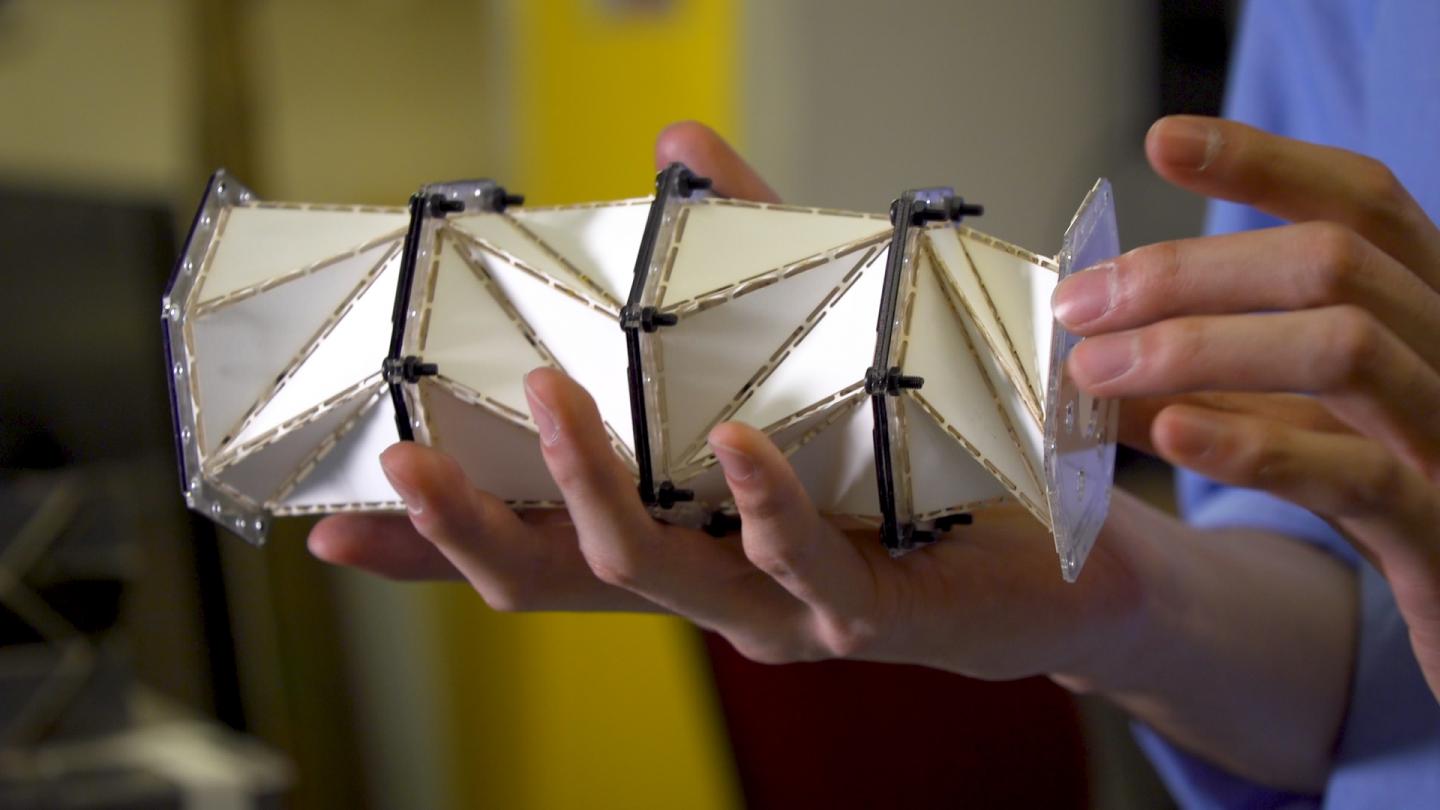Fold This! Origami-Inspired Material Could Soften Spacecraft Landings

Future spacecraft and rockets may have softer landings thanks to technology inspired by origami, the Japanese art of folding.
A research team created a paper model of a metamaterial — a highly flexible type of material that can be adapted to different purposes. This metamaterial model could be used not only for spaceflight, but also for cars and other devices that must absorb high impacts. The idea is based on using "folding creases" to lessen any impact forces and instead promote forces that relax stresses in the chain of metamaterials.
"If you were wearing a football helmet made of this material and something hit the helmet, you'd never feel that hit on your head. By the time the energy reaches you, it's no longer pushing. It's pulling," corresponding author Jinkyu Yang, a University of Washington associate professor of aeronautics and astronautics, said in a statement.
Related: Build Your Own Death Star: How to 3D Print a Real-Life 'Tractor Beam'
This new metamaterial model is very similar to origami. Researchers created the paper model by cutting dotted lines into paper, using a laser cutter. Next, they folded the paper along these lines to make a cylindrical structure. At either end of the structure, the scientists glued acrylic caps to connect each cylinder into a chain.
Once 20 cylinders were carefully pasted together, researchers connected one end of the chain to a device that pushed on the chain, creating a reaction. Researchers tracked the motion of the chain using six GoPro cameras, examining the compression wave and tension wave that followed until the cells completed their motions.
"The chain composed of the origami cells showed … counterintuitive wave motion: Even though the compressive pushing force from the device started the whole reaction, that force never made it to the other end of the chain," University of Washington researchers said in the statement. "Instead, it was replaced by the tension force that started as the first unit cells returned to normal, and propagated faster and faster down the chain. So the unit cells at the end of the chain only felt the tension force pulling them back."
Breaking space news, the latest updates on rocket launches, skywatching events and more!
This all means a potentially softer landing for spacecraft and rockets, but the researchers will need to further test the theory to prove it, according to the statement. Their next step is to try to replicate the paper model with more durable materials.
A paper based on the research was published May 24 in the journal Science Advances. The study was led by Hiromi Yasuda, a postdoctoral student at the University of Pennsylvania who completed this work while pursuing a doctorate at the University of Washington.
- Origami in Orbit: Ancient Art Inspires Efficient Spacecraft
- Space-Craft: NASA Offers Origami Model of Space Station's Expandable Habitat
- Tiny Folding Robots Could Explore Alien Worlds (Video)
Follow Elizabeth Howell on Twitter @howellspace. Follow us on Twitter @Spacedotcom and on Facebook.

Elizabeth Howell (she/her), Ph.D., was a staff writer in the spaceflight channel between 2022 and 2024 specializing in Canadian space news. She was contributing writer for Space.com for 10 years from 2012 to 2024. Elizabeth's reporting includes multiple exclusives with the White House, leading world coverage about a lost-and-found space tomato on the International Space Station, witnessing five human spaceflight launches on two continents, flying parabolic, working inside a spacesuit, and participating in a simulated Mars mission. Her latest book, "Why Am I Taller?" (ECW Press, 2022) is co-written with astronaut Dave Williams.


